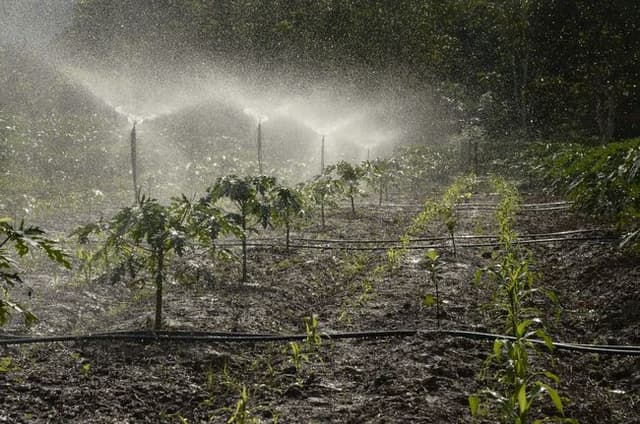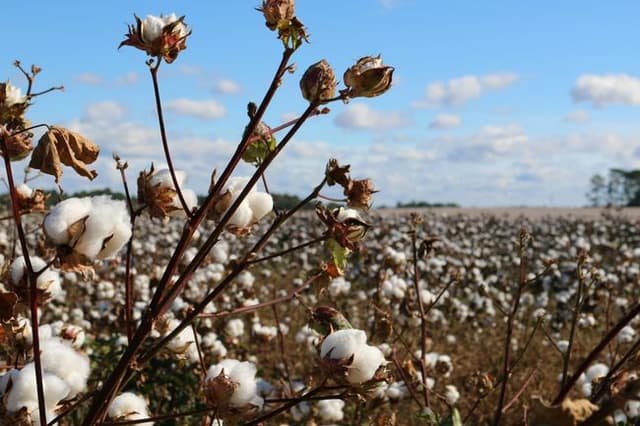Every drop counts: discover your water footprint!
Calculate your water footprint and discover the litres hidden in your daily consumption.
What is the water footprint?
The water footprint is the total amount of freshwater used to produce, distribute and end-of-life treat the products, goods and services we consume every day.
This very high water consumption is invisible to the naked eye, but its impact is very real.
Water footprint and carbon footprint are complementary, and understanding them enables us to act in favour of more sustainable management of the planet's natural resources.
What is calculated in the water footprint?
Growing the fruit, vegetables and cereals we eat
Growing the cotton used in our clothes
Production of feed for farm animals
Extracting materials for digital applications
Electricity generation
The water footprint, calculated in thousands of litres per day, takes into account the water needed to produce, distribute and process the goods and services consumed. This calculation also takes into account water stress and weights water consumption according to the scarcity of the resource in the areas concerned.
Please note: the water footprint does not take into account domestic water consumption (showers, toilets, cooking, watering)!
Everyday actions to preserve our water resources
Water is at the heart of our lives and our daily consumption, far beyond what we see at home. Every day, thousands of litres of water are used to produce the food we eat, the clothes we wear and the energy we consume.
Here are a few examples of actions that will have a significant impact on your indirect water consumption:
- Cooking with local, seasonal produce
- Reducing meat consumption
- Prefer tap water
Saving water, a sustainable development issue
With increasing pressure from human activities and climate change, sustainable water management has become a global challenge. Whether for agriculture, industry or domestic use, this limited resource is facing major threats. Reducing our water consumption and adopting responsible practices is therefore necessary to preserve resources and meet global environmental challenges.
Limited freshwater resources
Although water is abundant on Earth, only 1% of it is fresh and accessible for human consumption.Water pollution
Intensive farming practices and industrial waste are contaminating water resources, threatening ecosystems and our health.Access to water
Human activities are disrupting the water cycle and compromising access to drinking water, leading to conflict, loss of biodiversity and displacement of populations.
FAQ
Your questions about the water footprint
How do you calculate your water footprint?
Click to display the answerOn the Nos Gestes Climat website, the water footprint is calculated at the same time as the carbon footprint.
Using the Nos Gestes Climat calculator, we calculate the amount of water consumed by each of your uses (purchase of a product or food, use of a service, energy consumption).
So by calculating your carbon footprint, you also get an estimate of your water footprint for a complete picture of your impact.
There are several methods for calculating a water footprint. Each has its advantages, but none at this stage captures the full complexity of the issue of human impacts on the water cycle. We have chosen the AWARE method, which gives a fair assessment of the water stress in the regions affected by water consumption. It is the method recommended by the European Convention, and is widely used by ADEME for its LCA calculations.
Why is domestic water not included in the water footprint?
Click to display the answerDomestic water, the water that comes out of your taps for showering, cooking, cleaning... is not included in the water footprint because most of it is returned to the same catchment area after treatment.
Once it has been used, the water is cleaned and returned to local watercourses.
Just because it's not included doesn't mean it's not important! Many areas of France are regularly subject to water restrictions due to periods of drought. It's important to reduce domestic water consumption to share this vital resource more effectively and limit the pressure on local reserves.
Further information: A glossary of terms to help you understand the water footprint
What is green water, blue water and grey water?
Click to display the answerThere are several distinctions that highlight the qualitative differences in human impact on the water cycle. The colour of the water is a major one:
- Blue water: surface and groundwater withdrawn for irrigation, industrial production or energy;
- Green water: rainwater absorbed by the soil and used to grow crops without artificial irrigation;
- Grey water: quantity of water needed to dilute the pollutants generated by the production of a good or service.
The AWARE methodology we use to calculate the water footprint focuses on water withdrawals, i.e. blue water. It does not take grey water into account.
Further information: A glossary of terms to help you understand the water footprint
What are some examples of the water footprint of certain products?
Click to display the answerHere are some examples of water footprints for common products:
- A pair of jeans uses around 30,000 litres of water, mainly for growing cotton;
- A beef hamburger: approximately 380 litres of water ;
- A cup of coffee: 64 litres of water, from cultivation to processing ;
- One kilo of rice: 14,000 litres of water;
- One kilo of potatoes: 330 litres of water;
- A bar of chocolate (150g): 235 litres of water ;
- One litre of milk: about 330 litres of water;
- One egg: 75 litres of water ;
- A loaf of bread: 40 litres of water.
Water is hidden behind everything we consume, in proportions we don't always realise!
What is the average water footprint of a French person?
Click to display the answerThe water footprint of a French person is several thousand litres a day: between 4 and 8,000 on average.
Unlike the carbon footprint, we do not yet have consolidated data for France, or targets to aim for. But we already have a fairly accurate picture of the consequences of our monopolisation of this precious resource for all living things. We can act collectively to reduce our water footprint.
Does the water footprint lead to the same conclusions as the carbon footprint?
Click to display the answerWater footprint and carbon footprint go hand in hand.
A rise of 1 degree in global temperature leads to a 7% increase in atmospheric humidity. Water evaporates more, faster, and violent climatic phenomena intensify. Some regions dry up, while others are flooded.
In addition, the human footprint on soils (artificialization, intensive farming, deforestation) has greatly reduced their capacity to absorb and retain rainwater. It evaporates too quickly, and no longer feeds rivers, lakes and groundwater to the same extent, which is gradually running out.
Every gesture counts in guaranteeing sustainable access to water for all.
To reduce our water footprint, we need to change our daily habits.
Adopting a less water-intensive diet, by eating less meat and favouring local and seasonal produce, also has a significant impact. Finally, by avoiding waste and buying sustainably produced products, we can help preserve water resources while limiting our environmental footprint.



